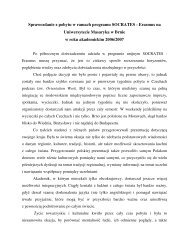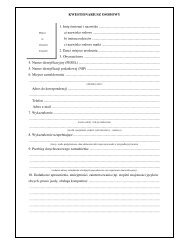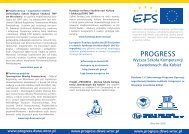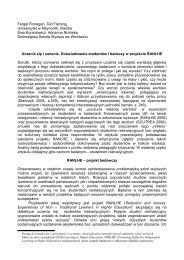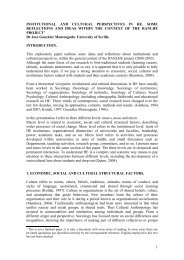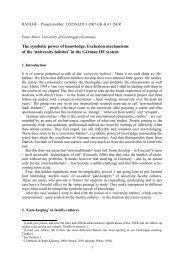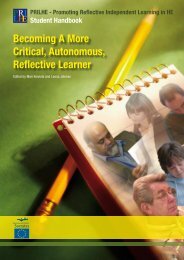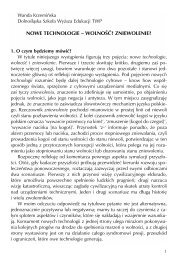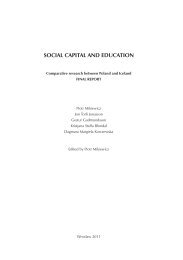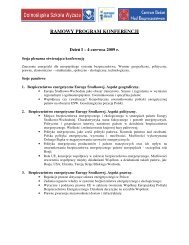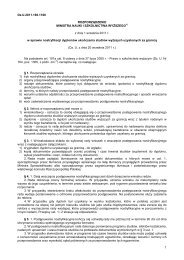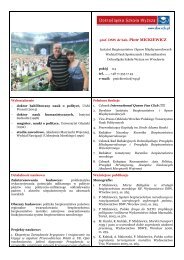Becoming A More Critical, Autonomous, Reflective Learner
Becoming A More Critical, Autonomous, Reflective Learner
Becoming A More Critical, Autonomous, Reflective Learner
You also want an ePaper? Increase the reach of your titles
YUMPU automatically turns print PDFs into web optimized ePapers that Google loves.
PRILHE Project - Lecturer’s Toolkit<br />
students learn so much from lectures. But if they get inspired and interested, he is satisfied as it is an important point of the<br />
learning process. Learning occurs best when students are involved in tasks like projects. Then they have to work by themselves<br />
with issues that promote reflection. He continues with a self-reflective analysis, why he has not taken the full consequences of this<br />
adjustment that learning is the most important thing to promote, and, for example, why he hasn’t taken away traditional exams and<br />
replaced them with innovative assessment approaches. His self-reflective conclusion is that he does not yet dare to challenge the<br />
culture at the department as he is working in a department where the dominant position is to hold on to measurable values (in high<br />
esteem) and where traditional exams are in accordance with those values.<br />
Another reason might be the number of students. When there are big groups of students it might be more difficult to develop new<br />
methods and it is more effective to give traditional lectures where students do not ask any questions and where the teacher can<br />
deliver what he/she is expected to do in a well-tried way. Economic reasons might be one reason behind this argument as they<br />
might become an excuse for not reflecting upon and being self-reflexive about teaching practice.<br />
2.4.2 Differences related to age<br />
There is a long tradition in Sweden of integrating different types of student in the same group. In most disciplines teachers no<br />
longer expect students to be 19 when they start their higher education study. Heterogeneous groups have been the norm in all<br />
universities for more than 30 years and one question that was raised by the teachers was therefore: “are non-traditional students<br />
different from younger students when it comes to reflective autonomous learning” Younger students often seem to be more<br />
insecure and less experienced than older students, which is one aspect that affects the learning situation. Often, older students<br />
have developed autonomy and self-esteem in their working life and through life-experiences. Older students dare to ask questions,<br />
they take more initiatives, are more goal-oriented and ambitious, often they know why and for what they are studying. Students<br />
who have been working for some years are also more capable of separating small things from larger things, important things from<br />
lesser important and so on. The question of social class and cultural capital are important issues here. Older students from working<br />
class backgrounds often have less self-esteem in the academic culture and feel like strangers there at the beginning of their HE<br />
studies. But from the students’ stories, we know that this is something that usually changes in the first year. We also know from<br />
Swedish students’ stories that younger students may feel inferior compared to older students because they lack experiences and<br />
the ability to express themselves in the same way as older students do. Teachers, on the other hand, might be of the same age or<br />
even younger than the non-traditional students which may cause another kind of relationship between students and teachers. They<br />
might share generational experiences and understandings of e.g. technology, community spirit, music, architecture, art and other<br />
time time-bound phenomena. This might create a community where younger students feel like outsiders if they are in a minority.<br />
Whether older students are in minority or in a majority seems to be an important aspect. In technical or scientific subjects, for<br />
example, non-traditional students are less prevalent compared to social sciences. And when they are in minority they also feel like<br />
outsiders.<br />
20<br />
<strong>Becoming</strong> A <strong>More</strong> <strong>Critical</strong>, <strong>Autonomous</strong>, <strong>Reflective</strong> <strong>Learner</strong>





